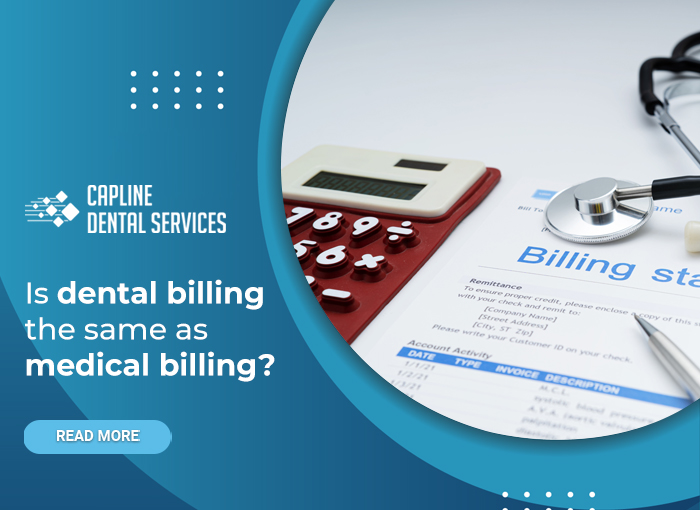Medical billing involves the medical claims filed to the insurer for the expected reimbursement considering the treatment offered by the provider. Similarly, dental billing encompasses every aspect of getting reimbursement from the insurance provider as per the patient's insurance plan.
However, there are many steps in the dental billing process, and if one of the steps gets missed can result in delayed payment from the insurance carrier.
The dental billing process is as follows:
- collecting patient information,
- verifying the details and active benefits on the patient's insurance plan,
- recording the offered treatment as per the medical necessity and relevant coding,
- submitting the claim with necessary attachments,
- tracking of the claim for follow-up,
- resolving the outstanding insurance claims,
- bill the patients as per the process,
- post payments, and
- run the reports for account aging and collections.
The dental billing process is a determining factor of the dental practice's revenue cycle management. Both are similar yet have some variations that get explained in the following article.
Similarities between dental and medical billing
- Both processes follow a flow to receive and process the claim by the insurer.
- For both billing procedures, the dental practice has to deal with the insurer properly.
- In both billing process, in-depth patient demographics is mandatory.
- Dental and medical billing require information when submitting the claim, with the proper coding for the respective insurance companies.
Difference between dental and medical billing
Dental billing uses diverse data for the coding process to send claims. They use CDT (Current Dental Terminology), updated and published by the American Dental Association, to get successful reimbursement. Whereas medical billing and coding use three main aspects CPT, HCPCS, and ICD-10.
In dental billing, the claim form is J430, J431, J432, J433, and J434; which requires a lot of additional information related to
- patient demographics,
- patient dental insurance,
- service provision date,
- dental codes,
- treatment location, charges, identification,
- procedure description-tooth surface,
- information on the missing teeth,
- tooth number or letter, and
- the oral cavity's perimeter.
In the medical billing claims, they need the procedure codes with the patient's diagnosis and the medical necessity. The insurance coverage of the patient plan plays a vital role in dental and medical billing. Most patients think that their plan also covers dental insurance, but both do not function in the same manner in terms of coverage.
Medical billing focuses on unexpected medical expenses such as emergencies and frequent visits for follow-up, whereas dental billing is preventive care such as screening and professional cleaning.
It helps patients to experience pleasant oral health that is inexpensive and accessible. However, each plan is unique and depends on individual requirements.
The issue with medical billing
- Medical billing begins as soon as the patient visits the healthcare. The staff collecting the patient information creates a foundation for further invoices and payments. And if the information is inadequate, that can lead to delays and denials.
- An increase in patient financial responsibility often left providers waiting on payment. Therefore neglecting to inform patients about the due amount can lead to problems in payment collections.
- The manual claim process increases the administrative burden and, in the end, is a problem for both hospitals and providers. However, an electronic claim can deal with the claim collections and denials seamlessly.
The issue with dental billing
- Giving sufficient time to in-office patients, treatment plans, calls, claims on insurance, appeals, and accounts receivable management needs extra support. A busy practice takes away from you the focus on revenue-generating elements and is busy fixing numerous items.
- Failure to follow the guidelines set by the individual insurers can lead to rejections.
- The dentistry industry is constantly evolving, and so much is out of control, such as new materials and techniques and relevant coding. The codes are updated basis of the additional treatment areas annually.
- Lack of follow-up increases the pile of unpaid bills, and to overcome that, the providers try to expand the number of patients they see in a day. That is not the best strategy because many patients have more than one policy. That can only accumulate debt.
- The collection of copay at the time of treatment is the best practice. Otherwise, the collection rate suffers.
